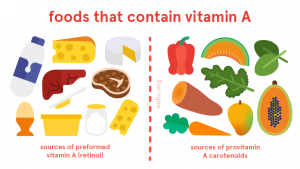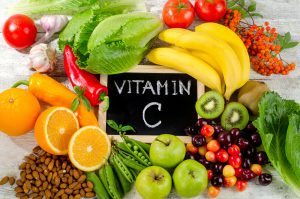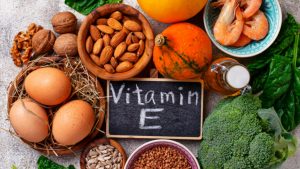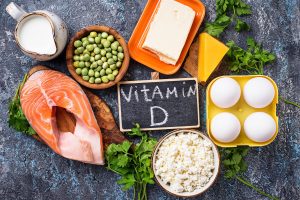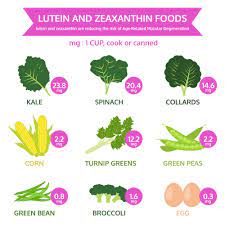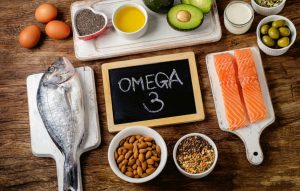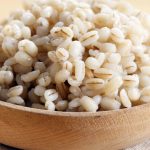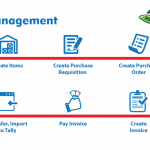One of the most vital organs in the body, the eyes require constant particular care. It is important to supply enough daily nutrients, such as vitamins A, C, and omega-3, as well as eye-healthy meals, in addition to a normal living and working schedule. When the body does not produce enough tears to lubricate the eyes, dry eye develops, causing discomfort, itching, redness, and pain. According to several research, eating 9 Best Foods For Dry Eyes that lower inflammation and increase tear production can help the symptoms of dry eyes. Let’s check our list of 9 Best Foods For Dry Eyes.
Best Foods For Dry Eyes with Antioxidant-rich
Antioxidants aid in defending cells against oxidative and free radical damage. Antioxidants not only shield the eyes from harm but also enhance tear flow and lessen the signs of dry eyes.
Numerous chemicals, including vitamin C, flavonoids, and polyphenols, have antioxidant properties. Berry, cocoa, herbs and spices, beans, artichokes, apples, nuts and seeds, cherries, dark green leafy vegetables, and tomatoes are just a few examples of plant-based foods that are high in antioxidants. coffee and tea, whole grains, tomatoes, grapes, potatoes, sweet potatoes, avocados, and pomegranates are some Best Foods For Dry Eyes options.
People with dry eye conditions should include these Best Foods For Dry Eyes high in antioxidants in their diets:
1. Nutrients high in vitamin A
The healthy operation of the eyes depends on vitamin A. A lack of vitamin A can cause dry eyes and night blindness. Vitamin A-rich meals can lessen the signs and symptoms of dry eye illness and enhance the quality of tears.
Many Best Foods For Dry Eyes including milk, eggs, carrots, pumpkin, squash, red bell peppers, papaya, mango, watermelon, and oranges, contain vitamin A.
2. Nutrients high in vitamin C
Ascorbic acid, another name for vitamin C, is a water-soluble vitamin that supports bone, skin, and blood vessel health as well as cell protection. Vitamin C is found in the tear film that covers and lubricates the eyes. Vitamin C enhances tear production and protects the eyes from pollutants and other substances.
Vitamin C-rich Best Foods For Dry Eyes include broccoli, bell peppers, tomatoes, green leafy vegetables, and citrus fruits.
3. Best Foods For Dry Eyes rich in vitamin E
A fat-soluble antioxidant, vitamin E assists numerous bodily processes. The ability of vitamin E to protect the eyes is a significant benefit. It contributes to the preservation of the tear film and protects the retina from damage.
Oils like sunflower oil, soybean oil, almond oil, peanuts, pumpkin, spinach, etc. all contain vitamin E.
4. Nutrients high in vitamin D
Another fat-soluble vitamin is vitamin D. The body can produce this kind of vitamin after being exposed to sunlight.
Low vitamin D intake has been linked to a higher risk of dry eyes, according to studies. Additionally, vitamin D insufficiency can cause dry eye symptoms to worsen and tear production to decrease.
In order to boost their intake of vitamin D-rich foods, patients should increase their intake of fatty fish, milk and dairy products, mushrooms, and other Best Foods For Dry Eyes. in addition to routine sun exposure.
5. Zeaxanthin and lutein-rich foods
The retina contains large amounts of the antioxidants zeaxanthin and lutein. They aid in shielding the eyes from the damaging effects of free radicals and ultraviolet (UV) rays.
According to research, consuming more zeaxanthin and lutein can lower your chance of developing eye conditions like dry eye disease.
Dark green leafy vegetables, squash, cabbage, broccoli, asparagus, lettuce, grapes, kiwi, tomatoes, egg yolks, and others are the Best Foods For Dry Eyes and sources high in zeaxanthin and lutein.
6. Omega-3 fatty acids
There is some evidence to suggest that increasing omega-3 fatty acid consumption may aid in the treatment of dry eye problems. Omega-3 fatty acids function to improve tear quality, boost tear production, and lower bodily inflammation.
A recent meta-analysis of 17 clinical trials found that omega-3 supplements were superior to placebo in terms of lowering the symptoms of dry eye and enhancing tear quality.
Another study found a significant decrease in tear evaporation and an increase in tear secretion in dry eye patients who received omega-3 supplements twice daily for 30 days.
Omega-3 fatty acids can be obtained as supplements or naturally occur in a variety of Best Foods For Dry Eyes, including walnuts, flaxseeds, chia seeds, seaweed, and algae, as well as salmon, sardines, mackerel, herring, and anchovies.
7. Caffeine
Caffeine is a stimulant that frequently makes people feel awake. Green tea, black tea, and coffee all contain it. According to recent studies, coffee may also increase the production of tears, so easing the symptoms of dry eyes and lowering the chance of acquiring the condition.
Conclusion:
Limiting foods that negatively affect inflammation and can aggravate dry eye symptoms, such as refined grains, fried foods, fast food, processed meat, sugary foods, and soft drinks, is important for people who suffer from dry eyes. A specialized physician must be seen by the patient if the symptoms of dry eyes are chronic in order to properly diagnose the problem and choose the best course of action. the top.
